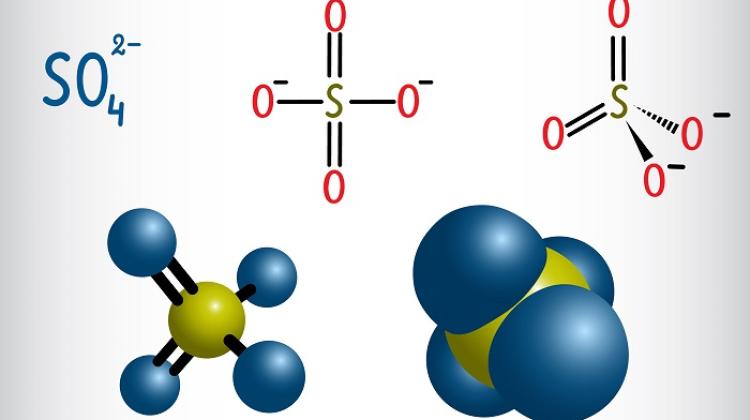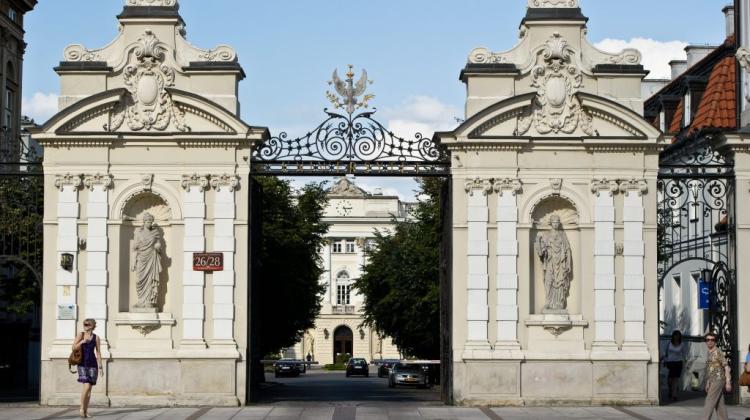Record-breaking plants - redwood larger than a whale, orchid more expensive than a house
 Photo: Fotolia
Photo: Fotolia
Pine can live for 5 thousand years, under the world\'s largest redwood a whale would look like a dwarf, and the most expensive flowers can cost a fortune. Dr. Danuta Solecka from the Faculty of Biology, University of Warsaw spoke about how fascinating plants can be.
"Plants are not boring. They can be really fascinating" - argued Dr. Solecka from the Institute of Experimental Biology and Biotechnology of Plants, University of Warsaw during the Night of Biologists.
She talked about the amazing capabilities of plants. She reminded that the oldest pines live for several thousand years. And this is not the end of the line for plants when it comes to longevity. For example, in Utah in the US there is the so-called trembling giant - a forest of interconnected, genetically identical trees - aspen. According to Solecka, the "trembling giant" occupies 43 hectares, weighs 6.5 thousand tons and is probably 10 thousand years old.
Another record holder among plants is Lomatie tasmantica. "This inconspicuous triploid that reproduces only vegetatively, not by seeds, has lived for approx. 44 thousand years in one spot in Tasmania".
Dr. Solecka also spoke about Wollemi pine. This species is already 200 million years old. "In 1994 several dozen Wollemi trees were discovered, samples taken from them, and now in a flower shop we can buy very ancient species - (...) that was on Earth in the times of dinosaurs" - said the biologist.
Plants can amaze not only with their longevity, but also size. "We always talk about blue whale as the largest animal on Earth. But let\'s be honest - it is a dwarf compared to General Sherman - a giant redwood (sequoia). That redwood is 6 times larger than the whale" - the researcher described. She told the mass of wood from the trunk of a redwood "is comparable to the mass of wood obtained from 2 hectares of a century-old pine forest".
As a counterbalance biologist gave the example of one of the smallest known trees. After 150 years, it is 10 cm tall and weighs 17 g. "But it grows and is alive" - noted Solecka.
One of the smallest flowering plants is Wolffia angusta. It produces leaves, flowers, seeds, and is only 0.6 mm tall. "In Poland we have its >>gigantic<< relative, which reaches 1.5 mm" - commented biologist.
In contrast, Rafflesia produces the largest flower on Earth. This flower can have a diameter of 1 m and weigh 10 kg. "Personally, I would not want to get such a flower. It does have a beautiful red colour, but the colour is supposed to resemble meat, like the flower’s smell. And it\'s the smell of meat which has already gone bad, because the flower is pollinated by flies" - said Dr. Solecka.
On the other hand, queen of the Andes, whose distant "cousin" is the pineapple, has one of the most impressive inflorescences. Flower spike of this plant can reach up to 9 meters. It can have 3 thousand single flower and 6 million seeds. "This plant sometimes grows for 100 years before it blooms, and after blossom - it usually dies" - said the researcher.
As for fruits, the record fruit found in nature was the 35 kg jackfruit that measured approx. 1m. However, this is nothing compared with fruits, cultivated by human. We have already grown a pumpkin that weighed more than 820 kg, a watermelon weighing more than 120 kg, a 65 kg zucchini and an 11 kg potatoe.
The biologist also spoke about the most expensive plants. In 1774 a hyacinth bulb from a variety called "King of Great Britain" sold for £100 - which equals USD 200,000 in today\'s money.
In turn, a hundred years ago an orchid sold for £ 1,000. "It was the price for which one could then buy a house in a decent neighbourhood in London" - the biologist said. The price tag was probably associated with the pot. This orchid was growing in a skull of a dead man.
Solecka also mentioned saffron - a very valuable spice. "To produce 1 kg of saffron you need 200 thousand stigmas. They are picked on certain days, at a certain stage of maturity, usually in the morning before the dew falls" - described the scientist from the University of Warsaw. Now 1kg of saffron costs approx. 5 thousand zlotys. But in the past - when saffron was not cultivated and only picked in the wild - the prices in gold were truly staggering.
Seeds of St John\'s-bread also called carob tree can be associated with precious materials. "The plant is very pedantic. All the seeds have a mass of 0.2 g. Which is why they were used as weights" - said Solecka. She noted that seeds of this plant were called carats, which is where the name of the unit used today by jewellers comes from.
PAP - Science and Scholarship in Poland
lt/ agt/ mrt/
tr. RL
Przed dodaniem komentarza prosimy o zapoznanie z Regulaminem forum serwisu Nauka w Polsce.

















